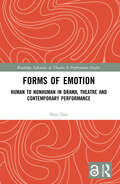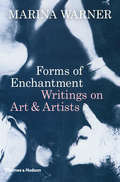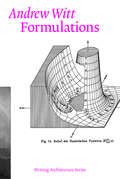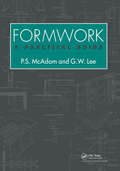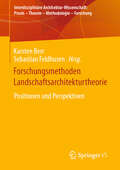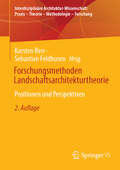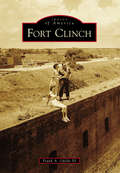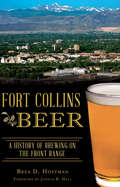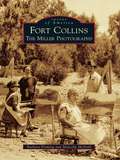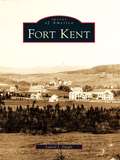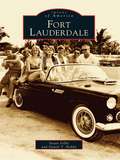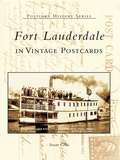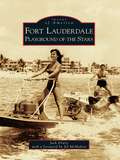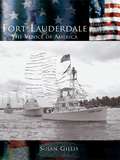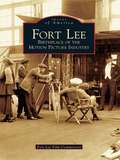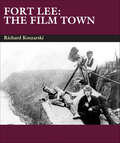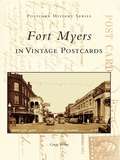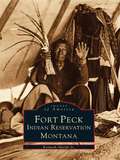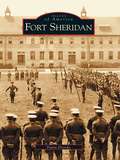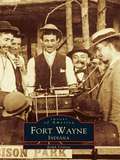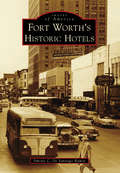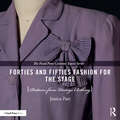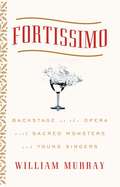- Table View
- List View
Forms of Dominance: On the Architecture and Urbanism of the Colonial Enterprise (Routledge Library Editions: Ethnoscapes)
by Nezar AlSayyadOriginally published in 1992, as part of the Ethnoscapes: Current Challenges in the Environmental Social Sciences series, reissued now with a new series introduction and new preface, Forms of Dominance: On the Architecture and Urbanism of the Colonial Enterprise examines the complex experience of colonial domination, social reaction, and physical adaptation within the built environment of regions such as Morocco, Eastern Europe, India, Guatemala and East Africa, and provides a multi-disciplinary and cross-cultural perspective on the colonial experience.
Forms of Emotion: Human to Nonhuman in Drama, Theatre and Contemporary Performance (Routledge Advances in Theatre & Performance Studies)
by Peta TaitForms of Emotion analyses how drama, theatre and contemporary performance present emotion and its human and nonhuman diversity. This book explores the emotions, emotional feelings, mood, and affect, which make up a spectrum of ‘emotion’, to illuminate theatrical knowledge and practice and reflect the distinctions and debates in philosophy, neuroscience, psychology, and other disciplines. This study asserts that specific forms of emotion are intentionally unified in drama, theatre, and performance to convey meaning, counteract separation and subversively champion emotional freedom. The book progressively shows that the dramatic and theatrical representation of the nonhuman reveals how human dominance is offset by emotional connection with birds, animals, and the natural environment. This book will be of great interest to students and researchers interested in the emotions and affect in dramatic literature, theatre studies, performance studies, psychology, and philosophy as well as artists working with emotionally expressive performance.
Forms of Enchantment: Writings On Art And Artists
by Marina WarnerAn anthology of enlightening writing by an award-winning critic that engages with art in its social, political, and aesthetic contexts. Art writing at its most useful should share the dynamism, fluidity, and passions of the objects of its enquiry, argues author Marina Warner in this new anthology. Here, some of Warner’s most compelling writing captures the visual experience of the work of a diverse group of artists—with a notable focus on the inner lives of women—through an exploration of the range of stories and symbols to which they allude in their work. Warner vividly describes this imagery, covering the connection with animals in the work of Louise Bourgeois, the Catholicism of Damien Hirst, performance as a medium of memory in the installations of Joan Jonas, and more. Rather than drawing on connoisseurship, Warner’s approach grows principally out of anthropology and mythology. Accompanied by illustrations of the works being described, Marina Warner’s writing unites the imagination of artist, writer, and reader, creating a reading experience that parallels the intrinsic pleasure of looking at art. This book will appeal to any student of art history, those interested in philosophy, feminism, and more generally in the humanities.
Formulations: Architecture, Mathematics, Culture (Writing Architecture)
by Andrew WittAn investigation of mathematics as it was drawn, encoded, imagined, and interpreted by architects on the eve of digitization in the mid-twentieth century.In Formulations, Andrew Witt examines the visual, methodological, and cultural intersections between architecture and mathematics. The linkages Witt explores involve not the mystic transcendence of numbers invoked throughout architectural history, but rather architecture&’s encounters with a range of calculational systems—techniques that architects inventively retooled for design. Witt offers a catalog of mid-twentieth-century practices of mathematical drawing and calculation in design that preceded and anticipated digitization as well as an account of the formal compendia that became a cultural currency shared between modern mathematicians and modern architects. Witt presents a series of extensively illustrated &“biographies of method&”—episodes that chart the myriad ways in which mathematics, particularly the mathematical notion of modeling and drawing, was spliced into the creative practice of design. These include early drawing machines that mechanized curvature; the incorporation of geometric maquettes—&“theorems made flesh&”—into the toolbox of design; the virtualization of buildings and landscapes through surveyed triangulation and photogrammetry; formal and functional topology; stereoscopic drawing; the economic implications of cubic matrices; and a strange synthesis of the technological, mineral, and biological: crystallographic design. Trained in both architecture and mathematics, Witt uses mathematics as a lens through which to understand the relationship between architecture and a much broader set of sciences and visual techniques. Through an intercultural exchange with other disciplines, he argues, architecture adapted not only the shapes and surfaces of mathematics but also its values and epistemic ideals.
Formwork: A practical guide
by Geoffrey LeeTo optimise formwork costs and minimise the time for its construction, the contractor needs to understand the guiding principles of safe and efficient formwork construction. He must also have some insight into the relative merits of the various methods, and should appreciate the practical details of formwork construction.
Forschungsmethoden Landschaftsarchitekturtheorie: Positionen und Perspektiven (Interdisziplinäre Architektur-Wissenschaft: Praxis – Theorie – Methodologie – Forschung)
by Karsten Berr Sebastian FeldhusenWie werden in Forschungsarbeiten in der Landschaftsarchitekturtheorie Erkenntnisse gewonnen? Um diese Frage zu beantworten, ist es sinnvoll, die Methode der Forschung einer individuellen Forschungsarbeit anschaulich zu machen. Ziel des Buchs ist es, eine Übersicht an aktuellen Forschungsmethoden im Feld der Landschaftsarchitekturtheorie zu geben. Damit möchte das Buch einen Beitrag zur Methodendiskussion in der Landschaftsarchitekturtheorie leisten, die häufig gefordert, aber selten geführt wird. Die Aufsätze in dem Buch sind untereinander formal und inhaltlich abgestimmt: Formal haben sie einen ähnlichen Aufbau, sodass die Methoden gut miteinander verglichen werden können. Inhaltlich sind die Aufsätze insofern miteinander abgestimmt, weil jeder Aufsatz für eine bestimmte Forschungsmethode in der Landschaftsarchitekturtheorie steht.
Forschungsmethoden Landschaftsarchitekturtheorie: Positionen und Perspektiven (Interdisziplinäre Architektur-Wissenschaft: Praxis – Theorie – Methodologie – Forschung)
by Karsten Berr Sebastian FeldhusenWie werden in Forschungsarbeiten in der Landschaftsarchitekturtheorie Erkenntnisse gewonnen? Um diese Frage zu beantworten, ist es sinnvoll, die Methode der Forschung einer individuellen Forschungsarbeit anschaulich zu machen. Ziel des Buchs ist es, eine Übersicht an aktuellen Forschungsmethoden im Feld der Landschaftsarchitekturtheorie zu geben. Damit möchte das Buch einen Beitrag zur Methodendiskussion in der Landschaftsarchitekturtheorie leisten, die häufig gefordert, aber selten geführt wird. Die Aufsätze in dem Buch sind untereinander formal und inhaltlich abgestimmt: Formal haben sie einen ähnlichen Aufbau, sodass die Methoden gut miteinander verglichen werden können. Inhaltlich sind die Aufsätze insofern miteinander abgestimmt, weil jeder Aufsatz für eine bestimmte Forschungsmethode in der Landschaftsarchitekturtheorie steht.
Fort Clinch (Images of America)
by Frank A. Ofeldt IIIAs part of the third system of fortifications built for harbor defense, Fort Clinch was constructed from 1847 to 1867. Serving in three wars, the Civil War, Spanish-American War, and World War II, the fort never saw battle and was never fully completed. Offered for public sale in 1926, Fort Clinch was sold by its owners to the State of Florida in 1935 and became one of the first nine Florida state parks. The fort was partially restored by the Civilian Conservation Corps from 1937 to 1942. Later, the Florida Park Service performed a more comprehensive restoration from 1963 to 1971 and created one of the finest living history programs in the country, offering an interpretation of Fort Clinch as it was in 1864, when the federal army occupied the fort and Amelia Island. Today, Fort Clinch State Park offers a wide range of recreation resources to visitors.
Fort Collins Beer: A History of Brewing on the Front Range (American Palate)
by Brea D. Hoffman Foreword By HallAlthough alcohol arrived with the first settlers in Fort Collins, Prohibition lingered until 1969. But the city was one of the first to latch onto the burgeoning craft beer movement. In 1989, Old Colorado Brewing Company paved the way as the city’s first microbrewery. And with the inception of breweries like Odell and New Belgium, local beer soon saw a strong resurgence followed by popularity nationwide. By 2010, a new generation of breweries, like Funkwerks and Equinox Brewing, emerged. Brea D. Hoffman divulges the history of Fort Collins’s evolving beer scene.
Fort Collins: The Miller Photographs
by Barbara Fleming Malcolm McneillPhotographer Mark Miller opened his studio in Fort Collins, Colorado, in 1914. The town he chose to live and work in sits in a river valley in northern Colorado, nestled between the Rocky Mountain foothills and the semiarid high plains, with Denver to the south and Cheyenne, Wyoming, to the north. Established as a Civil War-era army post, the town was a Wild West frontier outpost until it was tamed in the 1870s by the arrival of a land-grant college and the railroad. By the turn of the century, Fort Collins had become a quietly respectable college town with a thriving economy and steadily increasing population. Over almost six decades, as the small town evolved into a city, Miller photographed people, businesses, and landscapes. Fort Collins: The Miller Photographs offers a representative sampling of the over 70,000 Miller images, a collection housed at the Fort Collins Museum's Local History Archive.
Fort Kent
by Laurel J. DaigleFort Kent is located in northern Maine where the Fish River joins the St. John River. Joseph Nadeau, the first settler in Fort Kent, arrived in 1829. Acadian refugees from eastern Canada developed a farming community along the fertile river valleys, and within a short time other settlers from Canada and lower Maine came to make a new life. Fort Kent, remote from other populated areas, gradually developed into a thriving farming and lumbering community. An early pioneer, Maj. William Dickey was a strong advocate for the region and helped to establish the Madawaska Training School, a public school system, and improve roads. In 1902, the railroad connected to Fort Kent and provided needed freight and passenger services. As a border town, Fort Kent has enjoyed a colorful past, especially during the years of Prohibition, and a rich history that continues today.
Fort Lauderdale
by Susan Gillis Daniel T. HobbyLike many Sun Belt cities, Fort Lauderdale has experienced phenomenal growth over the past several decades. Once a wilderness home for the Seminole Indians and a few hardy pioneers, the small community grew up around Frank Stranahan's successful trading post, a convenient stop for hunters, fishermen, and sightseers preparing to head into the Everglades. But much more was in store for this rugged outback camp. Surveying Fort Lauderdale's fascinating history chronologically, this pictorial retrospective begins with the 1890s, a time when this part of the country was still part of America's frontier, isolated and wild. With the coming of the railroad and the twentieth century, an agricultural economy developed, and, soon, the Florida land boom would bring thousands of new settlers to the area. Fort Lauderdale's glistening beaches and comfortable climate earned the city anearly reputation as a tourist town and, eventually, as a Spring Break mecca.
Fort Lauderdale in Vintage Postcards
by Susan GillisFort Lauderdale, Florida, is a well-known tourist destination whose very name evokes the image of a postcard. What is today one of Florida's largest cities was not always prized for its beautiful beaches and tropical climate. In the early 20th century, it was hailed as the "Gateway to the Everglades" and a "vegetable shipping capital." By the 1920s, Fort Lauderdale found itself at the very center of the phenomenal Florida land boom. Development and tourism became driving forces for the new economy-and there has been no looking back.
Fort Lauderdale: Playground of the Stars
by Ed Mcmahon Jack DruryFew Southern cities have stronger claims to fame than Fort Lauderdale. As one of the great vacation destinations in America, over the years it attracted such celebrities as Bob Hope, Jayne Mansfield, Johnny Carson, Cary Grant, and the worldchampion New York Yankees. This beach townâ TMs history is starstudded and rich with interesting stories and photographs from that period.
Fort Lauderdale: The Venice of America
by Susan GillisTaking its name from a fortification established more than 160 years ago during the Second Seminole War, Fort Lauderdale boasts a history stretching back 5,000 years before the first white settlers arrived in the eighteenth century. From beautiful tales of the "mysterious" New River that helped launch the community to more recent stories of rum running and gambling, segregation and integration, and boom and bust, the history of this Florida city is told here through the everyday lives of those who lived it.
Fort Lee: Birthplace of the Motion Picture Industry
by Fort Lee Film CommissionA favorite locale of such film pioneers as D. W. Griffith and Mary Pickford, the historic borough of Fort Lee was the first center of the American motion picture industry. Studios lined both sides of Main Street, and enormous film laboratories fed the nickelodeon market with thousands of reels of comedies and cliffhangers. Broadway stars and producers came here to make many of their first feature-length films; but by the 1920s, Theda Bara, Fatty Arbuckle, and Douglas Fairbanks were gone. Yet even after the studios closed down, the film industry was still the backbone of the local economy, with hundreds working behind the scenes in the printing, storage, and distribution of movies being made in Hollywood.
Fort Lee: The Film Town (1904-2004)
by Richard KoszarskiDuring the 1910s, motion pictures came to dominate every aspect of life in the suburban New Jersey community of Fort Lee. During the nickelodeon era, D.W. Griffith, Mary Pickford, and Mack Sennett would ferry entire acting companies across the Hudson to pose against the Palisades. Theda Bara, "Fatty" Arbuckle, and Douglas Fairbanks worked in the rows of great greenhouse studios that sprang up in Fort Lee and the neighboring communities. Tax revenues from studios and laboratories swelled municipal coffers.Then, suddenly, everything changed. Fort Lee, the film town once hailed as the birthplace of the American motion picture industry, was now the industry's official ghost town. Stages once filled to capacity by Paramount and Universal were leased by independent producers or used as paint shops by scenic artists from Broadway. Most of Fort Lee's film history eventually burned away, one studio at a time.Richard Koszarski re-creates the rise and fall of Fort Lee filmmaking in a remarkable collage of period news accounts, memoirs, municipal records, previously unpublished memos and correspondence, and dozens of rare posters and photographs—not just film history, but a unique account of what happened to one New Jersey town hopelessly enthralled by the movies.Distributed for John Libbey Publishing
Fort Mill (Images of America)
by Leanne Burnett MorseMore than 250 years ago, near the border where the Carolina colony was divided into north and south, Catawba Indians welcomed the first white settlers to the riverbank at the Nation Ford, and the seeds of a town were sown. Since that time, the area that would become Fort Mill Township has persevered and prospered. From its early days, when Scots-Irish immigrants built the gristmill that gave the town its name, to the explosive growth of the 21st century, the story of Fort Mill has been written by larger-than-life characters like Col. Elliott White Springs, heroic Medal of Honor recipients, resilient cotton farmers, dedicated educators, determined civil rights advocates, and proud mill workers. Fort Mill has set itself apart as a place with a distinct personality and an enduring legacy. Self-sufficiency, Southern grit, and small-town values are just a few of the distinguishing characteristics of this unique town.
Fort Myers in Vintage Postcards (Postcard History)
by Gregg TurnerFort Myers lies on the beautiful, wide Caloosahatchee River. Tropical flowers and palm trees dot the landscape, which today boasts a revitalized downtown, historic neighborhoods, shopping, and a breathtaking waterfront. The fort itself, named for Lt. Col. Abraham Myers, was established to quell uprisings and help the Indian Removal campaigns. It was later used by Union forces in the Civil War, abandoned, and then reoccupied by courageous settlers who relied on the cattle business and farming to sustain families and the community. In the late 1800s, Fort Myers began to attract famous winter residents, such as "electrician" Thomas Edison, as well as wealthy sportsmen trying their luck at tarpon fishing. When the "iron horse" finally arrived in 1904, Fort Myers experienced an economic transformation, and her days as a frontier cow town were numbered.
Fort Peck Indian Reservation, Montana
by Kenneth Shields Jr.For generations, the Native American people have been a society of great mystery. The Assiniboine and Sioux Indians of the Fort Peck Reservation in northeastern Montana are no exception. Althoughcenturies old, their culture is only now being rediscovered and explored. The idea to reveal some of their fascinating story stemmed from the desire,devotion, and dedication of a few individuals to embrace the opportunity to explore this wondrous race of people. In 1851 at Fort Laramie, Wyoming, the tribes of Montana and Dakota territories signed a treaty with the U.S. Government, which led to thebeginnings of many congressional hearings concerning Native American reservations. In 1886 at Fort Peck Agency, the Sioux and Assiniboine exerted their sovereign powers and agreed with the government to create the Fort Peck Indian Reservation. After much negotiation over the two million acres of land, U.S. Congress ratified the agreement in 1888. This colorful heritage and legacy of Fort Peck is commemorated by the 200 images in this photographic collection. Featured are scenes of tribal leaders, schoolchildren, families, and celebrations from the late 1880s to the 1920s. All of the images were provided by Native American families living on the Fort Peck Reservation, the Fort Peck Tribal Archives, and the Montana Historical Society.
Fort Sheridan
by Diana DretskeAmid Chicago's North Shore communities is a national landmark--the former U.S. Army Base at Fort Sheridan (1887-1993). Fort Sheridan was created out of the civil and labor unrest following the Chicago Fire of 1871, the great Railway Strike of 1877, and the Haymarket Riot of 1886. These events produced an atmosphere of insecurity, prompting Chicago's wealthiest businessmen--North Shore residents and members of the Commercial Club of Chicago--to levy their influence with the federal government in establishing an army presence in their backyards. Fort Sheridan is a place rich in the traditions of the U.S. cavalry and artillery, of training camps, and the Women's Army Corps. This illustrated history explores the many aspects of Fort Sheridan and takes the reader on a journey through military life.
Fort Wayne, Indiana
by Ralph VioletteIn 1895, Fort Wayne officially celebrated the centennial of the construction of a Fort at the Three Rivers by General Anthony Wayne in 1794. For the belated birthday, Fort Wayne's streets were festooned with flags and bunting. Centennial archeswere erected throughout the city, and many events filled the week-long celebration. This photographic essay examines the century since the centennial. It outlines Fort Wayne's development in the twentieth century and conveys a picture of the city at the end of the century. The significance of the rivers in Fort Wayne's development is explored. A chapter on Calhoun Street focuses on the changes the twentieth century has produced in the downtown area. Changes in residential patterns, transportation, and leisure-time activities are emphasized.
Fort Worth's Historic Hotels (Images of America)
by Simone C. De Santiago RamosFort Worth, originally named Camp Worth, was founded as an Army outpost in 1849, and the old cavalry stables became Fort Worth's first hotel. The Texas & Pacific Railroad arrived in Fort Worth in July 1876, bringing the need for more lodging. Shortly after its arrival, boardinghouses and simple accommodations were quickly opened. At the turn of the century, Fort Worth became a center for cattle ranchers, and the first luxury hotels were built. By the next decade, wealthy oil barons replaced the cattle ranchers, and the demand for larger and more elaborate hotels was established. Many of these first hotels were replaced with motor lodges and smaller chain hotels after the growth of the automobile industry; however, a few are still in operation today.
Forties and Fifties Fashion for the Stage: Patterns from Vintage Clothing (The Focal Press Costume Topics Series)
by Jessica ParrForties and Fifties Fashion for the Stage: with Patterns from Vintage Clothing provides instruction on how to recreate fashion from the 1940s and 1950s that withstands the vigorous demands of theatrical stage use. This book provides historical context for the clothing and features authentic patterns taken from real vintage pieces. Forties and Fifties Fashion for the Stage demonstrates how to construct a durable costume from scratch, and how to adjust patterns to fit an individual’s measurements. The book also contains a number of "How To Fake It" chapters with advice on thrifting and how to create period fashion using today’s clothing. Both men’s and women’s fashions and patterns are featured, including formal and casual wear.
Fortissimo: Backstage at the Opera with Sacred Monsters and Young Singers
by William MurrayH. L. Mencken declared that “the opera is to music what a bawdy house is to a cathedral. ” It was not meant as a compliment, but to William Murray, former New Yorker staff writer and aspiring opera singer, a bawdy house is an apt metaphor for the opera: a place of confusion, high and low drama, fleshly pleasures and raucous song. InFortissimo, Murray follows twelve young singers in the Lyric Opera of Chicago’s training program, the prestigious Opera Center for American Artists, through the 2003–2004 season. In the course of the year, these singers attend countless coaching sessions, inspiring master classes, nerve-racking auditions and grueling rehearsals—and finally perform with some of the most celebrated names (and spectacular egos) in opera, from Samuel Ramey to José Cura and Natalie Dessay. While chronicling their progress, Murray offers an insider’s look at the different aspects of the opera world that influence a young singer’s success, a world filled with temperamental maestros, ambitious directors, old-world tradition and sacred monsters. Weaving recollections of his own days training in New York, Rome and Milan in the 1950s with the personal and artistic struggles of the young singers in Chicago today, Murray lays bare the staggering ambition and relentless will required to achieve a career in the arts. As he writes, “Becoming a successful opera singer—stepping out on a huge stage to try to fill the house with your voice, to bring an audience of thirty-six hundred people to its feet—is as risky in its own peculiar way as embarking on a career as a matador. You can triumph, you can struggle to survive or you can perish from your wounds. ”Fortissimois a delicious tale of rising talents, angst and heartache and small triumphs, and the music that inspires it all. From the Hardcover edition.

